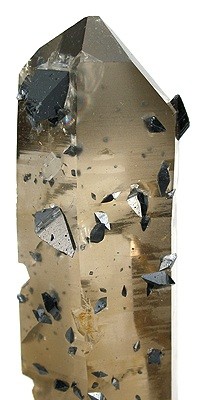Anatase
Anatase is formed at relatively low temperatures and found in minor concentrations in igneous and metamorphic rocks.
Nevertheless, anatase is often the first titanium dioxide phase to form in many processes due to its lower surface energy, with a transformation to rutile taking place at elevated temperatures.
[7] Although the degree of symmetry is the same for both anatase and rutile phases, there is no relation between the interfacial angles of the two minerals, except in the prism-zone of 45° and 90°.
Other names, now obsolete, are oisanite (by Jean-Claude Delamétherie) and dauphinite, from the well-known French locality of Le Bourg-d'Oisans in Dauphiné.
Crystals of this kind are abundant at Le Bourg-d'Oisans in Dauphiné, France, where they are associated with rock-crystal, feldspar, and axinite in crevices in granite and mica schist.
They occur attached to the walls of crevices in gneisses in the Alps, a well-known locality being the Binnenthal near Brig in canton Valais, Switzerland.
Often dopants are included in such synthesis processes to control the morphology, electronic structure, and surface chemistry of an anatase sample.

